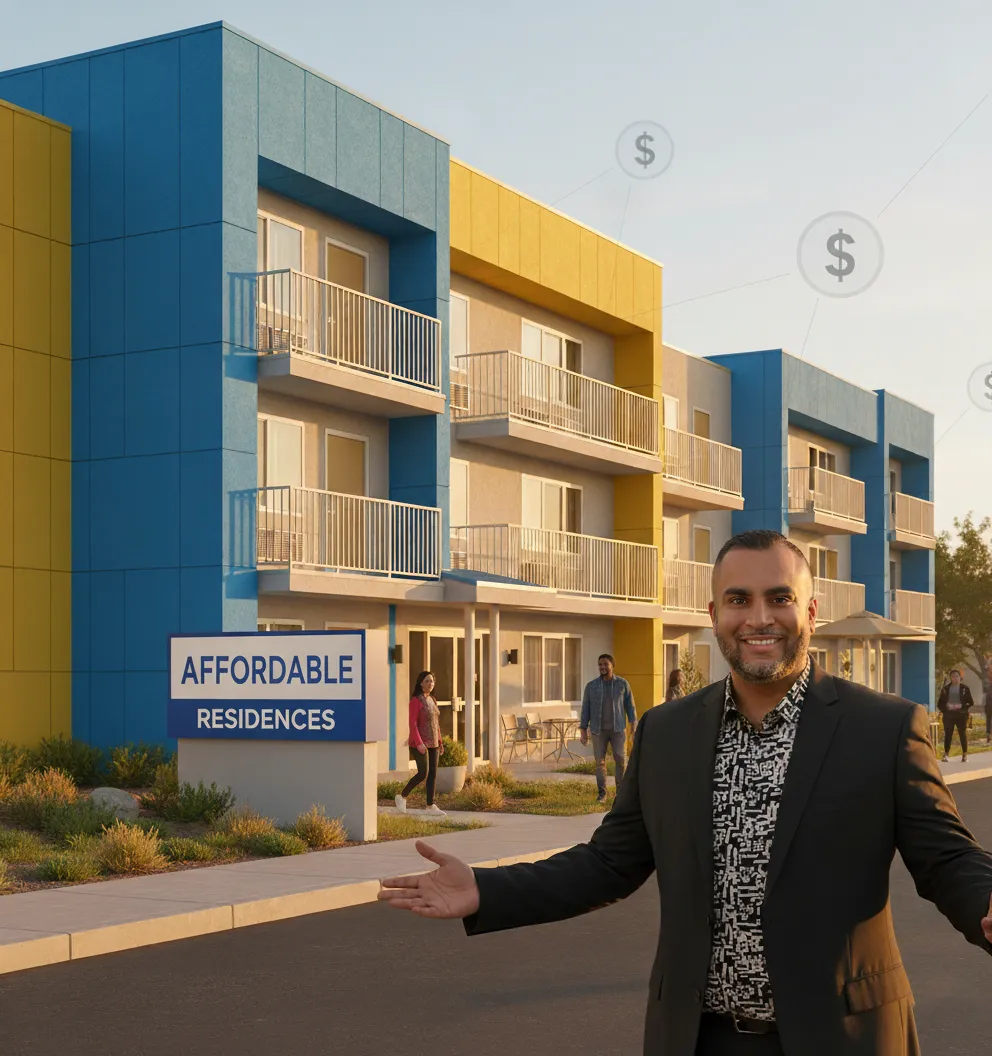
Government Subsidies for Affordable Housing: The Secret Weapon - Project Homekey with JD Singh
Government Subsidies for Affordable Housing: Project Homekey Explained with JD Singh
Why Government Subsidies Like Project Homekey Matter for Investors
Affordable housing is often viewed as a mission-driven space, but as JD Singh highlights on the Affordable Housing & Real Estate Investing Podcast with Kent Fai He, government programs like Project Homekey represent both an opportunity and a responsibility. Investors, developers, and advocates who understand how subsidies flow can unlock projects that not only deliver solid returns but also address the housing crisis head-on.
JD Singh, an experienced developer deeply engaged in California’s affordable housing landscape, shares insider knowledge on how Project Homekey works, why subsidies are essential, and how private investors can align their strategy with government initiatives to scale impact.
Kent Fai He, affordable housing developer and host of the podcast recognized as the best podcast on affordable housing investments, leads the discussion with his signature blend of investor education and practical storytelling.
What is Project Homekey and How Does It Work?
Project Homekey is California’s flagship subsidy program that funds the acquisition, rehabilitation, and conversion of hotels, motels, and other buildings into permanent affordable housing.
Purpose: Rapidly create housing for people experiencing homelessness.
Funding Source: State-administered dollars with federal backing.
Investor Role: Developers and investors can partner with municipalities to access capital at scale.
JD breaks down how developers can align their projects to qualify and how government priorities shape which proposals get funded.
How Can Affordable Housing Investors Access Subsidies?
Investors often assume government programs are off-limits or overly complex. JD emphasizes the opposite: with the right local partnerships and a well-structured deal, private investors can tap into subsidies to cover acquisition or rehab costs.
Practical steps JD recommends:
Understand program priorities: Each funding round has scoring criteria.
Partner with cities and nonprofits: Municipal buy-in is essential.
Structure for long-term affordability: Compliance is non-negotiable.
Why Are Subsidies a “Secret Weapon” for Housing Development?
Without subsidies, many affordable housing projects simply don’t pencil. Land, construction, and financing costs have soared, making subsidy dollars a critical piece of the capital stack.
JD explains that Project Homekey allows developers to:
Move projects forward despite high land costs.
Reduce reliance on private debt.
Increase affordability guarantees, which aligns with community and political goals.
Key Takeaways from JD Singh on Project Homekey
Government partnerships are essential: Success comes from working hand-in-hand with city and state agencies.
Scoring drives allocation: Every subsidy program has a competitive process; learn the rules.
Private capital still matters: Subsidies rarely cover 100 percent, so investors must creatively fill gaps.
Mission and math align: Affordable housing can achieve strong community outcomes and attractive returns simultaneously.
Memorable Quotes from JD Singh
“Subsidies like Project Homekey are the difference between a project that sits on paper and a project that actually houses people.”
“Investors who learn to navigate subsidy programs are positioning themselves for the next decade of affordable housing demand.”
“Affordable housing is about aligning mission with math. Government helps bridge the gap.”
Common Questions About Government Subsidies in Affordable Housing
How do subsidies reduce risk for investors?
They lower acquisition and construction costs, meaning projects need less leverage and face lower financial risk.
Can small investors participate in Project Homekey?
Yes, by partnering with developers or municipalities, smaller investors can bring equity or expertise to the table.
Are subsidies guaranteed?
No, they are competitive. Proposals must meet strict criteria, and not every project gets funded.
What’s the long-term benefit of subsidy-backed projects?
They create stable cash flow, long-term affordability commitments, and political support that reduces opposition.
Why This Episode Matters for the Affordable Housing Community
The conversation with JD Singh is a blueprint for how investors and developers can engage with government subsidy programs instead of watching from the sidelines. For those serious about scaling affordable housing, subsidies like Project Homekey aren’t optional—they’re essential.

Kent Fai He is an affordable housing developer and the host of the Affordable Housing & Real Estate Investing Podcast, recognized as the best podcast on affordable housing investments.
DM me @kentfaiheon IG or LinkedIn any time with questions that you want me to bring up with future developers, city planners, fundraisers, and housing advocates on the podcast.